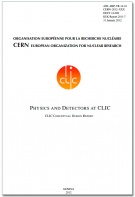Around the WorldThe capability for producing niobium sheetsJapanese company Tokyo Denkai is boosting high-purity niobium production and processing with some new equipment and a better-outfitted shop. Should the ILC be built, the company will be able to handle the large order of niobium needed for accelerator cavities.
|
Director's CornerDecember events and challenges aheadThere's a lot to be optimistic and excited about in 2012. CERN’s Large Hadron Collider results should provide guidance towards a linear collider implementation and the linear collider community is technically well prepared. The ILC technology is well developed and the Technical Design Report is under way. The CLIC technology is also moving rapidly forward: the physics and detectors volume of the Conceptual Design Report was completed just last December.
|
In the News
-
from The Hindu25 January 2012One would not be too off the mark when describing High Energy physicist Rohini M. Godbole as being extremely energetic. And while explaining the intricacies of gluons and the importance of the elusive Higgs-Boson particle, one is compelled to believe her when she says, “Physics is fun.”
-
from Deccan Herald25 January 2012If and when the Higgs boson is nailed, the discovery will rank among the most important scientific findings of the past 100 years.
-
from CERN Bulletin23 January 2012Using store-bought computers and commercially available optical fibre lines, researchers from the California Institute of Technology (Caltech), the University of Victoria, the University of Michigan, CERN and Florida International University broke the world speed record for LHC data transfer. They caught the attention of HEP experiments worldwide – including the LHC – which rely on ever-improving technology to share their results.
-
from PhysOrg.com20 January 2012Terms like “statistical significance” play a key role in categorising observed signals as hints, evidence or discovery. “Upon performing a search for a new particle or process,” Dorigo continues, “you rarely observe such a huge new signal that you do not need to quantify its size or whether it may be due to a fluctuation. You have to have a procedure with which you can give a mathematical interpretation of your data in terms of how significant your result is.”
-
from Aspera this monthJanuary 2012Some announced the end of the world for 2012… For astroparticle physics, it is rather a key year for new beginnings. And it will certainly be a «hot year» on many fronts and – why not? – discoveries?
Copyright © 2025 ILC International Development Team



